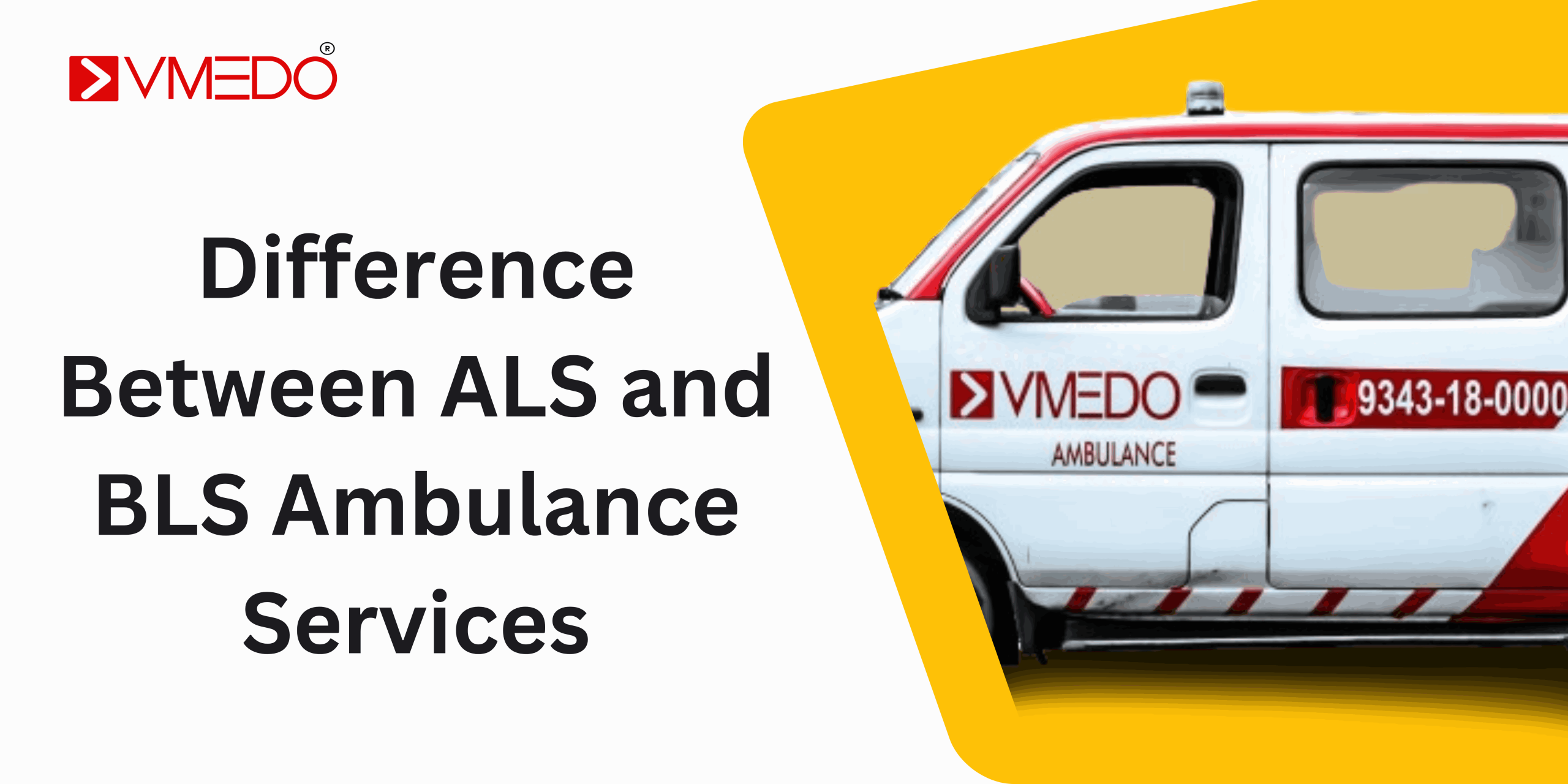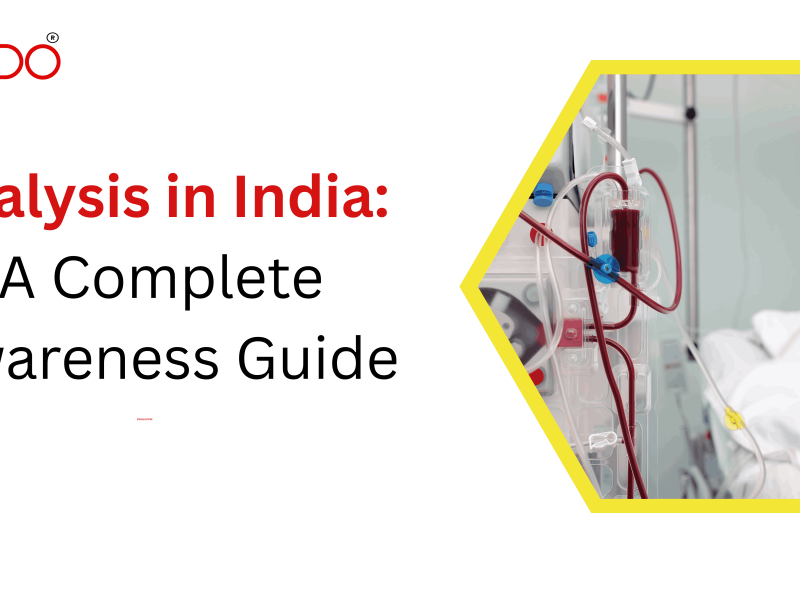In a medical emergency, the right response at the right time can be the difference between life and death. One of the most critical choices during such moments is selecting the appropriate ambulance service. Yet, many people are unaware of the distinctions between Basic Life Support (BLS) and Advanced Life Support (ALS) ambulances — two vital components of any emergency medical system.
BLS and ALS ambulance teams transport patients safely to healthcare facilities, but they provide significantly different levels of care, equipment, and medical expertise during transit. Choosing the wrong type of ambulance can delay critical treatment or lead to unnecessary costs.
This comprehensive guide will help you understand the key differences between ALS and BLS ambulance services, their roles in patient care, and when to choose which — empowering you to make informed decisions during emergencies or planned medical transfers. Whether you’re a caregiver, a healthcare worker, or simply someone who wants to be prepared, this blog will equip you with everything you need to know.
What is an Ambulance Service?
Ambulance services provide pre-hospital care and safely transport patients to medical facilities. Medical teams equip ambulances with essential tools and trained personnel to stabilize patients during transit.
However, not all ambulances are the same. The choice between ALS and BLS ambulances depends on the patient’s condition and the level of medical intervention needed.
What is BLS (Basic Life Support) Ambulance?
A BLS Ambulance is designed for patients who require basic medical care during transport but are not in a life-threatening condition.
Key Features of a BLS Ambulance:
-
Staffing: Typically includes trained Emergency Medical Technicians (EMTs).
-
Equipment:
-
Oxygen cylinders
-
Stretcher
-
Suction unit
-
Blood pressure monitor
-
Basic first aid and trauma supplies
-
Automated External Defibrillator (AED)
-
-
Purpose: Stabilization and non-invasive support during transit.
When is BLS Ambulance Needed?
-
Transfer of stable patients between hospitals or homes
-
Transport of patients with:
-
Fractures or minor injuries
-
Non-severe breathing problems
-
Dialysis appointments
-
Minor infections
-
-
Post-surgical discharge transport
What is ALS (Advanced Life Support) Ambulance?
Medical teams use ALS ambulances to transport critical patients who need advanced and invasive medical interventions on the way to the hospital.
Key Features of an ALS Ambulance:
-
Staffing: Includes a paramedic or a doctor, along with an EMT.
-
Equipment:
-
ECG monitor
-
Cardiac defibrillator
-
Ventilator
-
IV pumps
-
Advanced airway management tools (intubation kits)
-
Emergency medications
-
Suction devices
-
Pulse oximeter
-
-
Purpose: Advanced monitoring, medication administration, and life-saving interventions.
When is ALS Ambulance Needed?
-
Cardiac arrest or heart attack cases
-
Severe trauma or head injury
-
Stroke
-
Respiratory distress or failure
-
Unconsciousness
-
Seizures
-
Severe allergic reactions
-
Patients on ventilators or with tracheostomies
BLS vs ALS Ambulance: Key Differences
| Criteria | BLS (Basic Life Support) | ALS (Advanced Life Support) |
|---|---|---|
| Medical Staff | EMTs | Paramedics or Doctors + EMTs |
| Patient Condition | Stable, non-life-threatening | Critical, life-threatening |
| Equipment | Basic medical equipment | Advanced diagnostic and life-saving equipment |
| Life Support | Basic airway management, CPR | Cardiac monitoring, IV meds, intubation |
| Medications | Not permitted to administer IV drugs | Can administer emergency IV medications |
| Cost | Lower | Higher |
| Use Cases | Minor injuries, patient transfers | Heart attack, respiratory failure, trauma |
| Transport | Routine | Emergency, intensive transport |
Detailed Comparison
1. Medical Expertise
BLS ambulances are staffed by EMTs trained in non-invasive procedures. They can manage CPR, wound dressing, oxygen therapy, and safe patient handling.
Paramedics or doctors in ALS ambulances perform invasive procedures, including IV insertion, intubation, defibrillation, and drug administration.
2. Scope of Care
BLS offers monitoring and transport, whereas ALS provides critical interventions on the spot, like stabilizing cardiac rhythm or opening airways.
This distinction is vital during golden hour emergencies such as trauma or strokes, where ALS capabilities can mean the difference between life and death.
3. Equipment and Supplies
-
BLS ambulances focus on stabilizing the patient: splints, stretchers, suction units, oxygen, and AED.
-
ALS ambulances carry advanced diagnostic tools like cardiac monitors, syringe pumps, and emergency drug kits, similar to those found in an emergency room.
4. Response and Transport
ALS ambulances are typically dispatched for 911-level emergencies where medical decisions need to be made on the spot.
BLS ambulances are usually sent for non-urgent transfers like hospital discharges, clinic appointments, or stable injury transport.
Choosing the Right Ambulance: Factors to Consider
Here are a few factors that can help you decide between ALS and BLS:
-
Severity of the Patient’s Condition
Critical? Go for ALS. Stable? BLS should suffice. -
Doctor’s Recommendation
Consult the attending physician or hospital emergency team for guidance. -
Pre-existing Medical Conditions
If the patient has a history of cardiac arrest, seizures, or chronic lung disease, opt for ALS. -
Distance to Hospital
Long-distance intercity transfers with critical patients should always be ALS. -
Special Equipment Needs
Does the patient need a ventilator, ECG monitoring, or infusion support? Choose ALS.
Cost Implications
-
BLS Ambulance services are relatively more affordable, often used for routine transport.
-
ALS Ambulance services are costlier due to the high-end equipment, trained staff, and medical consumables involved.
However, when life is at stake, cost should never outweigh the importance of appropriate care.
ALS and BLS in the Indian Context
In India, services like VMEDO have been instrumental in bridging the gap between need and access by offering:
-
Prompt ALS/BLS service booking
-
Affordable packages for critical care transfers
-
Verified medical teams
-
City-wide and intercity coverage
Despite increasing awareness, many patients and families still struggle to choose the right ambulance type. With more public education, the efficiency of emergency response systems in India can drastically improve.
Conclusion
In critical moments, knowledge is power — and preparation is everything. Understanding the difference between Basic Life Support (BLS) and Advanced Life Support (ALS) ambulance services isn’t just medical jargon — it’s lifesaving information. The right ambulance service ensures that the patient receives the appropriate level of care during transport, minimizing risks and improving outcomes.
To recap:
-
BLS ambulances are suited for stable, non-life-threatening cases, focusing on safe transport and basic care.
-
ALS ambulances are equipped for critical, life-threatening emergencies, offering advanced medical support en route to the hospital.
Whether you’re dealing with a minor injury or a major medical crisis, knowing when to opt for ALS or BLS can make a world of difference. In situations where every second counts, this awareness can help you respond swiftly, confidently, and correctly.
VMEDO provides quick, reliable, and medically appropriate ambulance services across India with full commitment. Our 24/7 support ensures that whether it’s a routine transfer or a life-threatening emergency, you get the right care at the right time.
So the next time you or someone around you needs an ambulance, remember: it’s not just about getting to the hospital — it’s about getting there safely, with the right support.



